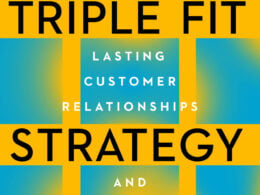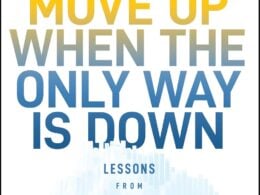Performance of a Lifetime is a consulting firm that uses the art and science of theatrical performance to help leaders, teams and organizations grow by focusing on the human side of business strategy. CEO Cathy Salit’s new book, “Performance Breakthrough: A Radical Approach to Success at Work” (Hachette Books) presents the theory and practical application of this approach to the general public for the first time. She argues that if we tap into our innate human capability to perform and pretend — to be both who we are and who we’re not at the same time (i.e., who are becoming) — we can accelerate and expand our learning and growth.
The following is an excerpt from Salit’s new book, “Performance Breakthrough: A Radical Approach to Success at Work,” selected for StartupNation readers:
We all know it’s a good idea to listen—and that most people don’t. But knowing that fact never made anybody a better listener, and the sad truth is that most of us just don’t know how. As former CEO Lee lacocca said, “I only wish I could find an institute that teaches people how to listen. Businesspeople need to listen at least as much as they need to talk.”
And so what does it mean to really listen? Let me start with what listening is not: Listening is not transactional; listening is not passive; listening is not waiting your turn to talk. Listening is active. It’s curious. It’s creative. It’s collaborative.
And listening is a performance.
Performing as a listener has everything to do with improvisation. If you’ve ever seen improv comedy performed, you’ve experienced the kind of magic that takes place as people perform what looks and sounds like a very funny, well-rehearsed script. But there is no script. No rehearsal. No plan. And, frankly, it’s not magic (although it is magical). Improvisers can create theater without a script for one reason: They are awesome listeners. And improvisers perform listening in a very particular way. They listen to build with others. They listen to create with others. They listen to collaborate with others. That’s the whole kit and caboodle. It’s like active listening on steroids. Improvisers are open and willing to say yes to their co-performers, follow them anywhere, and co-create with everything they are given. This act of listening is called hearing offers.
Stephen Nachmanovitch, the improvisational violinist and author of the book “Free Play,” elegantly explains how conversation and improvisation are so intimately related: “The most common form of improvisation is ordinary speech. As we talk and listen, we are drawing on a set of building blocks (vocabulary) and rules of combining them (grammar). These have been given to us by our culture. But the sentences we make with them may never have been said before and may never be said again. Every conversation is a form of jazz. The activity of instantaneous creation is as ordinary to us as breathing.”
In jazz improvisation, the ensemble members (i.e., the people in the band) are listening and building with the notes, the rhythm, the volume, the emotion—what I call musical offers. In ordinary speech, the ensemble members (i.e., the people in the conversation) listen and build with offers that are in the forms of words, emotions, body language, nonverbal sounds, and intent. We make offers all the time, and we are given offers all the time. If we don’t hear, see, and build with these offers, then there’s just no music.
Say you’re meeting with a potential client and you’ve prepared a 50-page presentation, with graphs and data and photos and analysis and numbers and branding. You’re feeling pretty good. You worked hard to get your foot in the door and it’s showtime. And there you are, ten minutes into your pitch, and your client yawns. He surreptitiously glances at his phone. But you power on because you’ve got 37 slides to go, and you’re getting to the really good ones that you and your team worked on for days. Your client shifts in his seat a few times, looks at his watch.
This is an offer!
It’s practically screaming in your face and jumping up and down in front of you. Please, please, hear it, see it, and build with it. Perhaps you say something like, “Mauricio, let me pause here for a minute to see how we’re doing. The deck is here and we can review further at any point, but how does this sound so far?” Mauricio will no longer be yawning, I guarantee that. Mauricio feels heard, included, and attended to in that moment. I can’t say what will happen next (the music remains to be made), but at least you have a fighting chance. At least you’ve heard the offer and you and Mauricio are in the same scene.
In every conversation, we’re presented with all kinds of offers. Even if the opposite appears to be the case. A colleague ignoring your question is an offer. Your team getting the research that you asked for done early is an offer. A client saying she’s not interested in whatever you have to sell is an offer. A laugh at your joke is an offer. Your boss not looking up at you when you come into her office is an offer.
What happens to most of us is that we ignore the offers that are right there, smack in front of us. There are many reasons why this is so. Perhaps we’re afraid that we don’t know what to do with what we’re seeing and hearing, and so we just keep doing what we always do, even as we see the conversation crumble before our eyes. Or we disagree with what we hear, and we put all our energy into mounting a convincing argument. Or we get attached to the locomotive of our agenda and can’t get off that train. Or we’re worried we’ll sound stupid, be inappropriate, say the wrong thing, freeze, or be culturally insensitive. Maybe we’re confused. Or annoyed. Upset.
All of the above are probably true for all of us, some of the time. But armed with the improviser’s “superpowers” of performing as a listener, hearing offers and building with them, you can move into the unknown and unknowable and co-create with another person. All kinds of possibilities and opportunities emerge that are simply not there—until you build them.
Purchase a copy of “Performance Breakthrough: A Radical Approach to Success at Work,” available now via Amazon.com.






